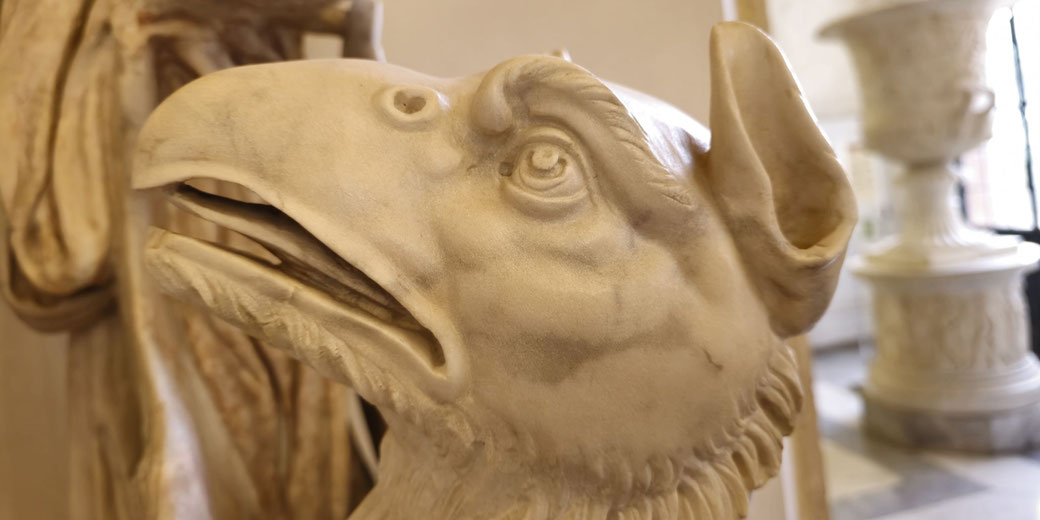7 most terrifying monsters from Greek mythology

Tales of winged beasts, giants that ate flesh, and monsters that could transform themselves to look like any person on earth have filled the stories of people in ancient times.
These fantastical creatures were meant to represent important warnings, signs, and tests for gods and heroes in Greek mythology.
Here, we look at how these creatures and explain how it helped the ancient people make sense of who they were.
Typhon: The Father of All Monsters
Typhon was one of the strongest and most frightening monsters in Greek stories.
According to myth, he was the child of Gaia (the Earth) and Tartarus (the Underworld). This made him the father of all monsters.
He had a human-like upper body, but his lower half was like a dragon or serpent.
His body was covered in wings, scales, and snakes, and he had a hundred heads that breathed fire from his mouth.
In one great battle, Zeus defeated Typhon. Zeus threw thunderbolts at him, and the monster threw mountains and rocks back at him.
Eventually, Zeus managed to force Typhon down and bury him under Mount Etna.
Medusa: The Gorgon with Petrifying Gaze
Medusa was a terrifying Gorgon who had snakes for hair and could turn people to stone when they looked at her.
Legend says she was once a beautiful woman who was cursed by Athena for treating her temple with disrespect.
She eventually became one of the most feared figures in Greek tales.
Perseus used a polished shield to see her reflection instead of looking directly at her before cutting off her head.
From that wound sprang the winged horse Pegasus and the warrior Chrysaor.

Chimera: The Fire-Breathing Beast
Chimera was a creature with the head of a lion, the body of a goat, and the tail of a serpent.
It could breathe fire and was so frightening that everyone feared it. According to the story, Bellerophon rode Pegasus and killed it with a spear.
Hydra: The Many-Headed Serpent
Hydra was a serpent with many heads. Every time one head was cut off, two more grew in its place.
This made her a very dangerous enemy, even more so because she had poisonous breath and blood.
Heracles (also known as Hercules) killed her as part of the twelve labours given to him by King Eurysteus.
In the fight, Heracles realised that he could not defeat her with his sword or arrows.
He got help from his nephew Iolaus, who used a flaming torch to burn the neck stumps after each head was cut off, which prevented them from growing back.
Minotaur: The Half-Man, Half-Bull
The Minotaur was a creature with the head of a bull and the body of a man.
Originally, he was born when Pasiphae, King Minos’s wife, mated with a sacred bull.
The Minotaur was then kept in a maze designed by the builder Daedalus and fed seven Athenian young men and seven young women on a regular basis as tribute.
The Greek hero Theseus entered the maze and killed him, using a ball of string that Ariadne, King Minos’s daughter, gave him to find his way out.
Harpies: The Winged Female Monsters
Harpies were female creatures with the body of a bird and the face of a woman.
In myth, they were known for their loud, screeching cries, often linked to Zeus, and were seen as the winds of storms.
They would harass and carry away people as punishment for their wrong actions.
Cyclopes: The One-Eyed Giants
Cyclopes were giants with a single eye in the centre of their foreheads and were known for their great strength and large size.
They were often shown as rude and violent, and were thought to live in caves and mountains.
Originally, they were locked away by Uranus before being freed by Cronus, and later Zeus, during the war with the Titans.
According to the story, they helped Zeus in his fights against the Titans by making thunderbolts for him.
The most famous Cyclops was Polyphemus, who was blinded by Odysseus.
Why were monsters so popular in Greek mythology?
In Greek stories, monsters were often used as signs of chaos, risk, and the unknown.
They showed the wild parts of nature and the human mind, which ultimately revealed the underlying fears of the ancient Greeks.
For example, the Hydra, with its many heads that grew back, showed how problems can return again and again.
Similarly, the Chimera, with its mix of animal parts, showed how the world could be unpredictable.
Medusa, who could turn people to stone, showed how beauty and desire could be dangerous.
Many were linked to certain places or events, like the Cyclopes and volcanic eruptions or the Minotaur and the maze on Crete.
This connection represented a natural world that had powers that people did not fully understand.
What do you need help with?
Download ready-to-use digital learning resources
Copyright © History Skills 2014-2025.
Contact via email
With the exception of links to external sites, some historical sources and extracts from specific publications, all content on this website is copyrighted by History Skills. This content may not be copied, republished or redistributed without written permission from the website creator. Please use the Contact page to obtain relevant permission.





